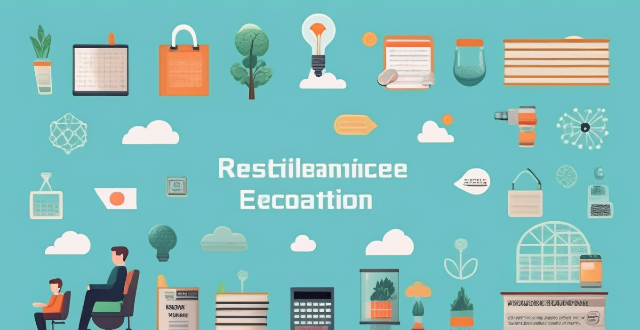Climate resilience is essential for community sustainability and well-being. Building it involves education, sustainable infrastructure, ecosystem conservation, economic strategies, community engagement, and research. Efforts must be collective across all sectors to achieve a resilient and sustainable future.

Building Climate Resilience in Our Communities
Climate resilience refers to the ability of a community or system to withstand, adapt to, and recover from the impacts of climate change. It is crucial for the long-term sustainability and well-being of communities around the world. Here's how we can build climate resilience in our communities:
Education and Awareness
- Foster Environmental Literacy: Educate community members about the causes and effects of climate change, as well as the importance of taking action.
- Promote Sustainable Practices: Encourage individuals to adopt environmentally friendly behaviors such as recycling, reducing energy consumption, and using public transportation.
Infrastructure and Planning
- Improve Infrastructure: Strengthen buildings, roads, bridges, and other infrastructure to withstand extreme weather events like floods and hurricanes.
- Implement Green Infrastructure: Use natural solutions like green roofs, rain gardens, and permeable pavements to manage stormwater and reduce heat island effects.
- Update Land Use Policies: Revise zoning laws and land use policies to account for climate change impacts, ensuring that development is resilient and sustainable.
Ecosystem Conservation and Restoration
- Protect Natural Habitats: Preserve wetlands, forests, and other ecosystems that provide natural buffers against climate change impacts.
- Restore Degraded Ecosystems: Rehabilitate damaged ecosystems to restore their function as carbon sinks and protect biodiversity.
- Promote Biodiversity: Support initiatives that maintain and enhance biodiversity, which can improve the overall health and resilience of ecosystems.
Economic Strategies and Policies
- Invest in Clean Energy: Encourage the transition to renewable energy sources through incentives and regulations.
- Support Local Businesses: Foster local economies that are less reliant on fossil fuels and more focused on sustainable practices.
- Develop Climate-Smart Policies: Create policies that consider the long-term implications of climate change on economic growth and stability.
Community Engagement and Partnerships
- Encourage Community Participation: Involve residents in decision-making processes related to climate resilience planning and implementation.
- Build Partnerships: Collaborate with government agencies, NGOs, businesses, and educational institutions to create comprehensive resilience strategies.
- Prepare for Emergencies: Establish emergency response plans and train community members in disaster preparedness and response.
Research and Innovation
- Conduct Climate Research: Fund research into climate science, adaptation strategies, and mitigation technologies.
- Promote Innovation: Encourage the development and adoption of innovative solutions that increase community resilience.
By taking these steps, we can build more resilient communities that are better equipped to face the challenges posed by a changing climate. It requires a collective effort from all sectors of society, working together toward a common goal of sustainability and resilience.